Deaf Man's Village
Introduction
Text-to-speech Audio
Images
An interpretive drawing used in a newspaper publication from 1869.
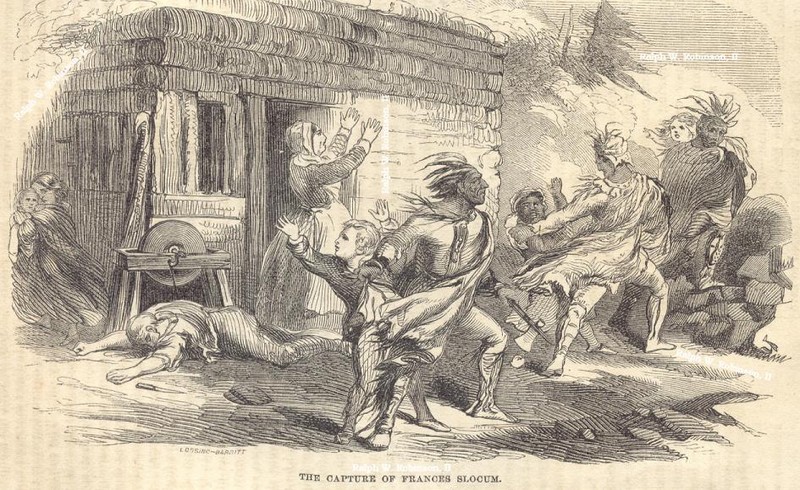
This portrait was drawn by Jennie Brownscombe to be used in the book The Lost Sister of Wyoming. A Biography written by Slocum’s Grandniece, Martha Bennett Phelps
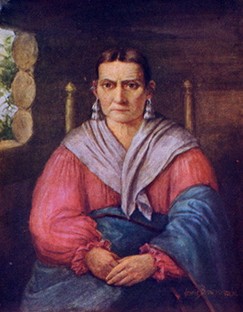
A topographic map of the Dam area.
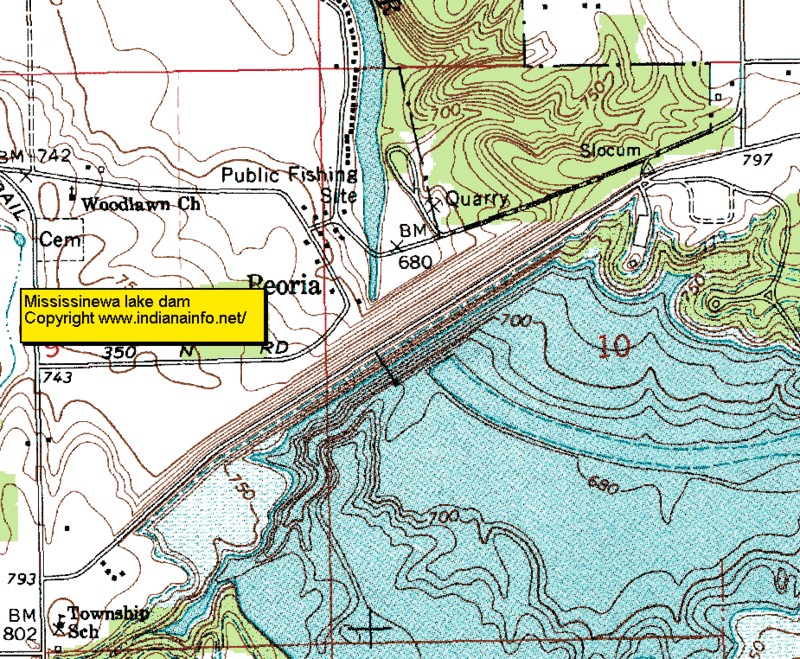
This portion of the Mississinewa Lake Park shows where the Frances Slocum State Recreational Area is, where the Miami State Recreational Area is, and shows the cemetery where Frances Slocum is Buried.

A closer look at the Frances Slocum State Recreational Area
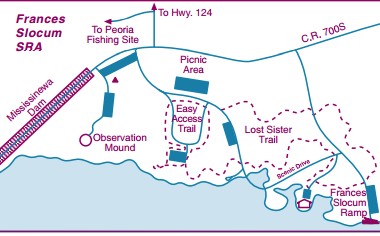
A closer look at the Miami State Recreational Area.
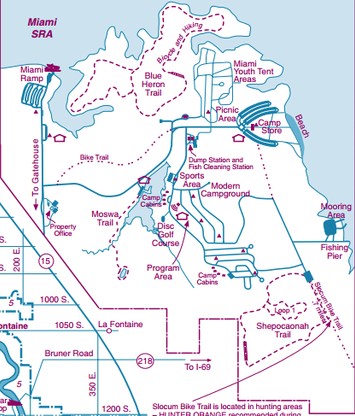
This is a proposed map of how the Mississinewa River looked like before the construction of the Dam in 1967.
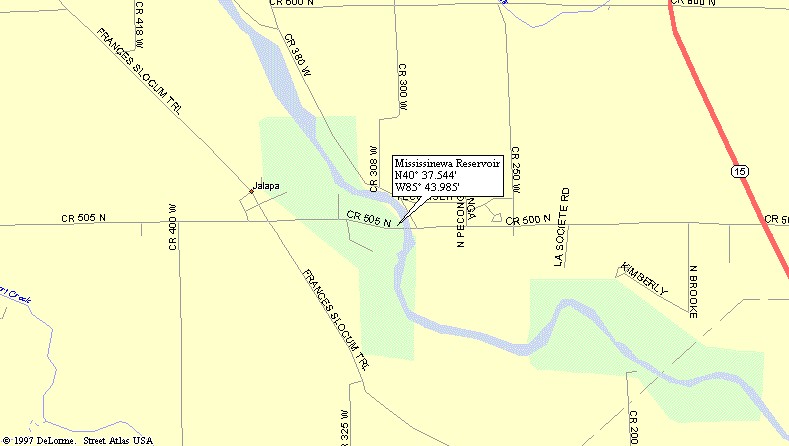
Deaf Man's Village, near Peru, Indiana, 1839. Watercolor by George Winter.
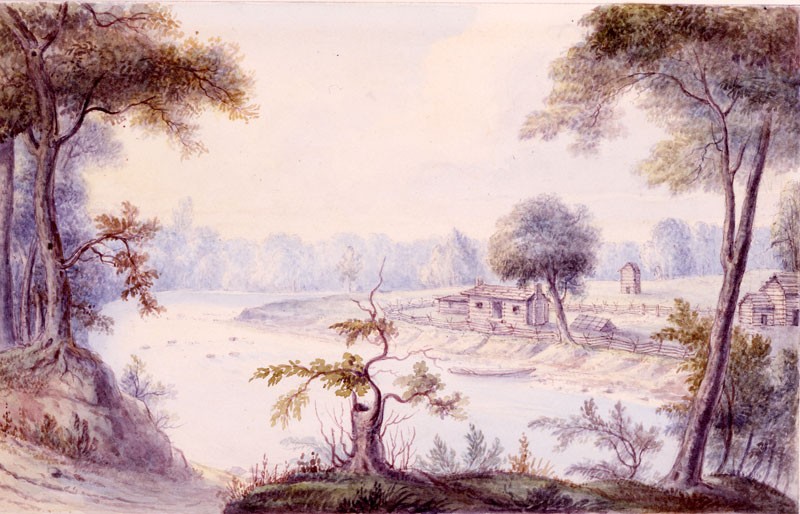
Backstory and Context
Text-to-speech Audio
In her youth, Frances was given the name Maconaquah. This name means 'Young Bear.' The name was given to her because of her mannerisms. Whilst traveling, Frances would cry and yell. In order to appease her, the Delaware tried to give her toys and nice things to play with. In her frustration she would bat them away with her hand, much like a bear cub would paw at something. From this moment her name, Maconaquah, was given to her. She was then adopted by a childless Delaware couple and raised as their own.(4)(3)
In her adulthood, she married a man by the name of Tuck Horse, a Delaware man.(4) Tuck still lived with his parents in their wigwam, and was rumored to abuse alcohol. Whilst Maconaquah was collecting materials to build her own wigwam, Tuck had lowered to domestic violence. She then moved back in with her adoptive parents.(4)
Miami Tradition has it that Maconaquah was walking through the woods when she encountered a wounded Miami warrior by the name of Shepoconah.(4) She took him back to her parent's wigwam and nursed him back to health. Upon his recovery, Shepoconah and Maconaquah were married. She mothered 4 children, two of whom passed at an early age. Her daughters survived into adulthood and were also married and had children.(1)
Once Shepoconah retired his chiefdom in 1812, he and Maconaquah moved farther upriver to build their home and trading post which became known as "Deaf Man's Village."(1) After the death of her husband, Maconaquah remained in Deaf Man's Village living out her remaining years. She revealed to a traveler, George Ewing, that she was white from birth and recounted her story to him.(6) Fascinated with her biography, Ewing wrote a letter to a Pennsylvania newspaper. After some years, the letter was published and the two Slocum brothers were directed to Deaf Man's Village to find their long lost sister. Upon finding her and urging her to come home with them. She told them this:
"I do not wish to live any better, or anywhere else, and I think the Great Spirit has permitted me to live so long because I have always lived with the Indians. I should have died sooner if I had left them. On his dying bed my husband charged me not to leave the Indians. I have a house and large lands, two daughters, a son-in-law, three grand children, and everything to make me comfortable; why should I go, and be like a fish out of water?"(1)
She died at the age of 80 and is buried nearby.(5) Her grave is marked on the Mississinewa Lake State Park Map.
Sources
2https://www.indianaoutfitters.com/Maps/state_park_maps/Mississinewa_lake/mississinewa_brochure.pdf.
3Meginness, John F. (1891). Biography of Frances Slocum, The Lost Sister of Wyoming. Williamsport, PA: Heller Bros
4http://www.womenhistoryblog.com/2012/11/frances-slocum.html
5http://incass-inmiami.org/miami/cemeteries/slocum/fslocum.html
6http://www.nmanchesterhistory.org/indians-frances-slocum.html
